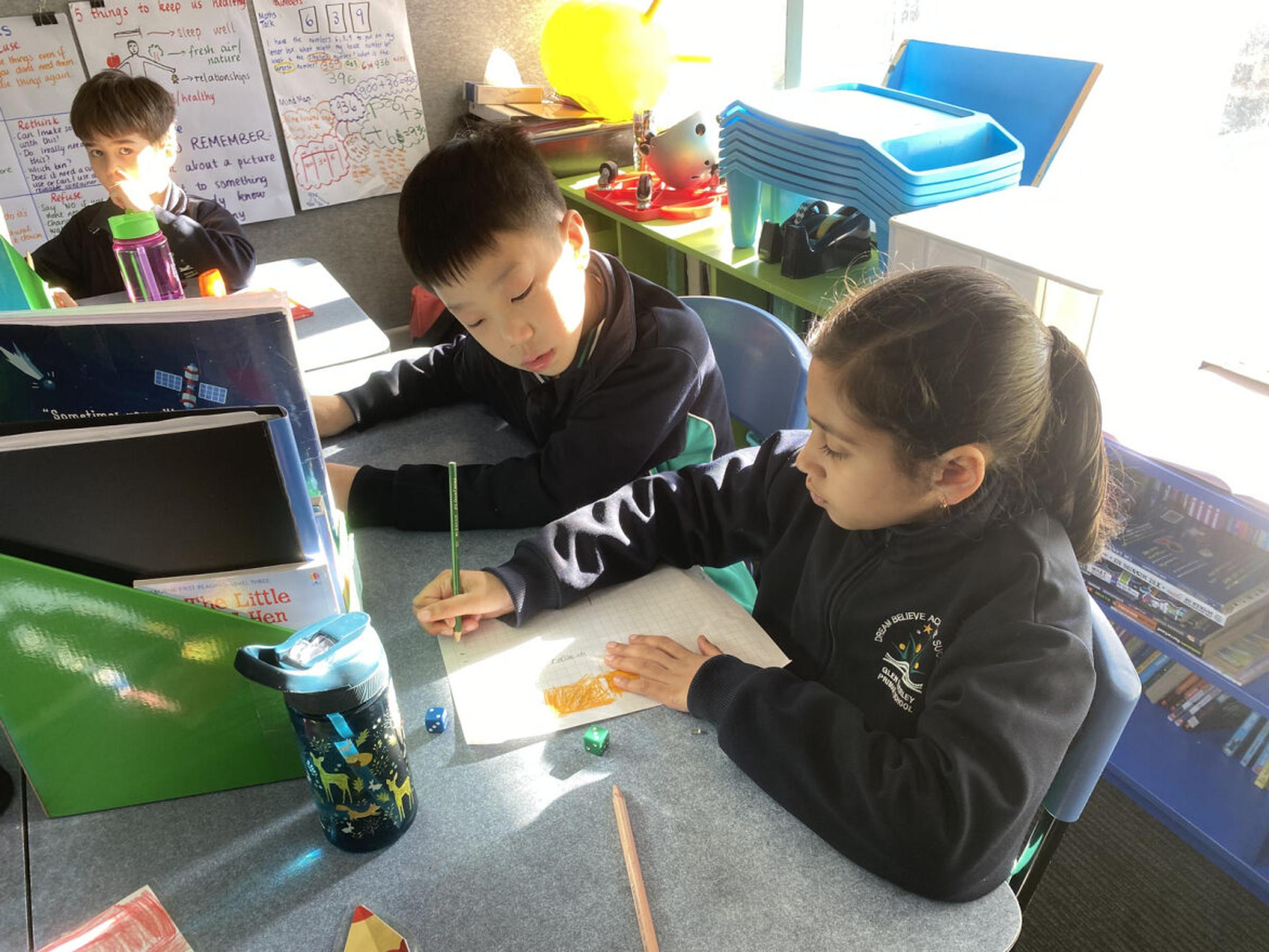Mathematics

KEY VOCABULARY TO SUPPORT YOUR CHILD | ||
Money Coin, note, 5 cents, 10 cents, 20 cents, 50 cents, 1 dollar, 2 dollars, 5 dollars, 10 dollars, 20 dollars, 50 dollars, 100 dollars, value, change, price, cost, transaction | Volume, Capacity and Mass Volume, capacity, mass, compare, order, object, container, informal unit, formal unit, grams (g), kilograms (kg), millilitres (mL), litres (L), full, empty, half full, nearly full, nearly empty | Chance and Probability Chance, probability, likelihood, likely, unlikely, certain, uncertain, possible, impossible, event, data, collection, outcome |
During Term 4, students will be engaged in a variety of learning activities aimed at expanding their mathematical skills. Let's take a closer look at what they will be learning in each specific area:
Throughout the upcoming term, Learners will explore Australian currency. This is essential for all learners as it equips them with crucial life skills. Understanding the different notes and coins, calculating change, and solving mathematical problems involving money are valuable abilities they'll use throughout their lives and are skills that will be investigated. These skills enable them to manage their finances effectively and make informed choices when buying items. To help solidify this knowledge, hands-on activities will be integrated into each lesson. These activities will involve using real money to practice identification and calculations, making the learning process engaging and transferable to later learning and life experiences.
In our Statistics and Probability explorations for Term 4, learners will investigate chance and probability as it is an important aspect of their cognitive development. Identifying practical activities and everyday events involving chance helps them make sense of the unpredictable world around them. Describing outcomes as 'likely' or 'unlikely' and recognizing events as 'certain' or 'impossible' aids in decision-making and problem-solving. Hands-on activities will be integrated into the curriculum to provide children with tangible experiences of chance. Conducting chance experiments, identifying possible outcomes, and acknowledging variations in results through hands-on experiments and games will make learning about probability engaging and relatable.
In our final Measurement and Geometry unit, the concepts of volume, capacity, and mass will be explored. These concepts play a fundamental role in a child's understanding of the physical world around them. Comparing and ordering objects based on length, area, volume, and capacity using uniform informal units is essential for developing their spatial and measurement skills. Additionally, understanding metric units of length, area, mass, and capacity is crucial for everyday tasks, from cooking to DIY projects. Hands-on activities will be a key component of these lessons, allowing children to physically measure, compare, and manipulate objects. This hands-on approach enhances their comprehension and retention of these vital concepts.
To support your child’s learning at home, you could:
- Involve your child in solving Money questions while at the shops or while generating shopping lists. For example: “I need to by 2 punnets of strawberries and I have $4.75. Each punnet costs $2.15, how much will the strawberries cost and what change will I get?”
- Look around the house and gather a few everyday objects of different sizes and weights. Have your child compare and order these objects based on their size and weight. Ask questions like, "Which one is heavier?" or "Which one is larger?" Encourage them to use words like "bigger," "smaller," "heavier," or "lighter" to describe the objects. You may also like to involve them in the kitchen by getting them to measure the ingredients using measuring cups, scales etc.
- Making predictions on the likelihood of different events occurring. For example: Based on the previous days’ weather reports, what is the weather likely to be tomorrow? Or pose cause and effect questions, such as, if it is sunny outside, what is the likelihood of the need to wear rainboots outside.
